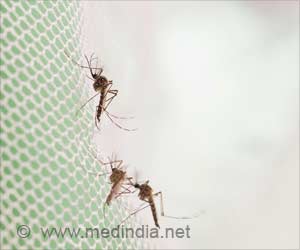Landless labourers of a Bihar village affected by Kala Azar, will soon have a decent house, thanks to the government's plan to check the spread.
Patna: Landless labourers of a Bihar village affected by Kala Azar, will soon have a decent house, thanks to the government's plan to check the spread of the deadly disease.
Dream of a pucca house made of brick and mortar is all set to become a reality for these landless labourers of Naubatpur village near Patna, affected badly by Kala Azar, a parasitic disease transmitted by the tiny sand fly.Now they will be provided houses by the central government to check the spread of the disease.
"By providing proper houses to Kala Azar affected families, our aim is clear to create a friendly environment to check and control the disease," Rural Development Minister Raghuvansh Prasad Singh said Tuesday.
According to Singh, about 12,960 pucca houses will be built in addition to the Indira Awas Yojna units for the Kala Azar affected families in 216 villages spread in over two dozen districts of the state.
"At least 60 houses will be built in each of 216 villages for the kala azar affected families at the cost of Rs.24.30 crores (Rs.243 million)," Singh said.
Experts said that due to poor living standard and unhygienic conditions, the disease spread faster among the poor Dalit community of Mushahars.
Advertisement
The official record estimated that 25,000 people, mostly poor in 31 of the state's 38 districts, are in its grip. The disease is characterised by fever, weight loss, swelling of the spleen and liver and leads to cardiovascular complications resulting in death.
Advertisement
The little sand fly that transmits the disease multiplies in the cow dung that villagers use liberally to plaster their shanties or as cow dung cakes for fuel. The flies survive on the sap in banana and bamboo groves and the decomposed cow dung heaps and make their home in the straw thatches of houses.
"Decent houses will prove hostile to the little sand fly to survive and will help the fight against the disease," Singh told IANS over telephone.
Deaths from Kala Azar in different parts of the state have been reported regularly in local dailies. The state government's claims of providing treatment for Kala Azar still remains on paper.
Many of the worst Kala Azar hit areas are in the north Bihar districts of Vaishali, Muzaffarpur, Vaishali, Sitamarhi, Sheohar and East and West Champaran.
In October-November last year, 29 died in Muzaffarpur and 35 in Vaishali due to Kala Azar.
Bihar last faced a Kala Azar epidemic in 1991 when 250,000 cases were reported. In 2000, the numbers were low but started rising from 2003.
The disease occurs in 62 countries, primarily in the developing world. Around 90 percent of world cases are found in India, Bangladesh, Nepal, Sudan and northeast Brazil.
Experts say over 60 percent of the cases in India are found in Bihar alone.
Source-IANS
SRM





